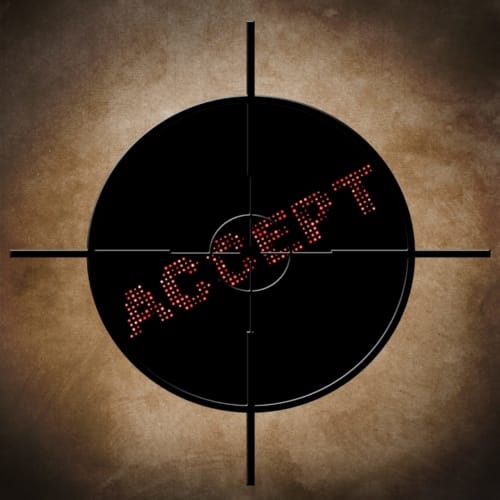Table of Contents
Four Ways to Provide Support for 21st Century Problem Solving Skills
 By Dawn Johnson Mitchell
By Dawn Johnson Mitchell
Ms. Thomas, having recently participated in a project-based learning cohort created by Furman University’s Riley Institute in partnership with her local school district, left the professional development energized by the promise of student-driven, inquiry-based learning. She held in her hands a fully developed, integrated unit plan she created including essential components of student choice, sustained inquiry, authentic products, and a real world audience. She felt ready to inspire and engage her fourth-grade students in researching and designing solutions to shoreline erosion on South Carolina’s coast and Barrier Islands. Effective Plan…Excited Teacher…Engaging STEM Challenge… project-based learning (PBL) Process…everything points to success, right?
Well, Ms. Thomas, like the rest of the teachers in our cohort, believed strongly in the progressive-based teaching structures that put students in the driver’s seat. However, when our students took the wheel, they struggled, not with the standards-driven content or the student choice and voice, but with the soft skills needed to collaborate and communicate and to apply critical thinking skills inherent in PBL. At our next PBL support group (a.k.a. graduate class meeting) when teachers shared where everyone was with their implementation, Ms. Thomas spoke for the group when she said, “You know I thought the hard part was the planning of our PBL unit. Nope. The struggle is real when you begin to implement it with students.” Does this sound familiar? We realized in our discussions related to time management, agency, communicating, and especially collaboration that these soft skills were anything but soft.
Each one of us represented in our PBL cohort all agreed whole-heartedly that we wanted the 4 C’s―Communication, Collaboration, Creativity, and Critical Thinking―to be part of the processes and products of our instruction because we know these soft skills are essential to student-driven instruction. We are not alone in valuing these life skills that are hard to measure but necessary for success. Research conducted all the way back in 1918 by Harvard University, the Carnegie Foundation and Stanford Research Center concluded that 85 percent of job success comes from having well-developed soft skills and people skills while a mere 15 percent of job success was attributed to technical skills and knowledge. So why are these skills still often underappreciated?
Our specific struggle was not in recognizing the value of soft skills, but in learning how to support their growth in our students. After analyzing teacher self-assessments related to their implementation of project based learning as well as their written reflections, it was clear the majority of our cohort wanted and needed support with soft skills within our units of study. We focused our inquiry and efforts on strategic support of soft skills within our PBL/STEM units of study. Through our work, we identified four understandings that guide our instruction of soft skills.
1.) Don’t Assume Soft Skills… Assess Where Students Are
 In the space between planning our PBL units of study and implementing them, we realized that we made a critical error. We assumed students possessed the soft skills we embedded in the processes and the products of our problem and project-based units of study. In our excitement to design compelling entry events and challenging driving questions, we assumed students were ready to utilize soft skills as tools for learning in the same way they could a tech device when given a QR code to a webmix. While we began our units with pre-assessments of students’ content skills and provided structured choices to help guide their academic inquiry we did not assess where our students were with soft skills.
In the space between planning our PBL units of study and implementing them, we realized that we made a critical error. We assumed students possessed the soft skills we embedded in the processes and the products of our problem and project-based units of study. In our excitement to design compelling entry events and challenging driving questions, we assumed students were ready to utilize soft skills as tools for learning in the same way they could a tech device when given a QR code to a webmix. While we began our units with pre-assessments of students’ content skills and provided structured choices to help guide their academic inquiry we did not assess where our students were with soft skills.
While we believed in the progressive tenets of PBL and had whole-heartedly answered yes when asked, “Can our students do this?” we realized that we hadn’t asked the critical question: “Are our students ready for this?” In researching support for soft skills, we learned from the book Setting the Standard for Project-Based Learning and realized that we needed to begin our unit with this critical question. Taking time to assess students and/or having students self-assess can be helpful to determine if students are ready for the types and levels of soft skill applications you have designed for them within your units of study.
We found the collaboration, critical friends, and teamwork rubrics provided by the Buck Institute for Education (BIE) and the agency rubrics provided by New Tech Network to be very helpful resources for not only assessing soft skills, but also for teaching them. These rubrics provide concise, objective terminology that helped us to define clearly the soft skills we want to foster while also providing a continuum that allowed for growth.
2.) Don’t Assign Collaboration… Apply With Intentional Instruction
 After we had assessed where students were with soft skills, we realized that in the same ways students had diverse experiences and strengths with the content, they also had different levels of capacity with project-based learning and/or other methods of student-driven, inquiry-based instruction. We realized that while we had done a commendable job of assigning collaboration in our PBL units, we had not accounted for the direct instruction and the subsequent and ongoing support for these soft skills.
After we had assessed where students were with soft skills, we realized that in the same ways students had diverse experiences and strengths with the content, they also had different levels of capacity with project-based learning and/or other methods of student-driven, inquiry-based instruction. We realized that while we had done a commendable job of assigning collaboration in our PBL units, we had not accounted for the direct instruction and the subsequent and ongoing support for these soft skills.
Another book we learned from is Steven Zemelman’s From Inquiry to Action. We learned the importance of identifying the “Need to Knows” in our academic work, investing time and thought into considering what literacy skills students would need support in for their research and even what tech support they may need to create their final products. We had not taken the time to identify what soft skills students would need to know in order to be successful. We realized that in order to teach students to work together effectively we needed to identify the skills that are part of effective, collaborative work.
As we named these soft skills, we began to consider specific ways we could teach them explicitly and consistently. Ms. Thomas identified the following collaborative skills students needed support with to be successful in her unit: active listening during the sharing of ideas, respect for others’ viewpoints, the art of compromise, and making decisions through a consensus process. She decided she wanted to teach these skills through a workshop structure where she provided modeling and a demonstration in a mini-lesson, followed by students having time to practice in a short collaborative activity before applying in the context of their PBL unit.
A little later in the unit, Ms. Thomas knew she wanted students to provide each other with the opportunity to engage in critique and revision of their group work. Instead of assigning the Critical Friends protocol she wanted students to use, she spent time teaching students how to give and receive feedback, which ensured students understood the procedures and saw the value in the process from the demonstration before they implemented it with efficacy.
3.) Don’t Impose Accountability– Foster Agreements
 In our own inquiry into effective soft skill support, specifically with agency and collaboration, we discovered two student driven strategies that promote both independent task and time management as well as effective collaboration: group contracts and co-constructed rubrics.
In our own inquiry into effective soft skill support, specifically with agency and collaboration, we discovered two student driven strategies that promote both independent task and time management as well as effective collaboration: group contracts and co-constructed rubrics.
In traditional models of instruction, the teacher typically defines the expectations for the product outcomes and/or processes, creates clear criteria and assigns scores based completion at the level on the continuum. With project-based learning, instead of imposing this accountability on to students and expecting them to comply immediately, we wanted to provide students with the opportunity to apply what they were learning about collaboration through the creation of their own group contracts.
We learned that engaging in honest conversations with students about challenges that occur when working with a team, then providing support for how students can overcome them, helps inform what they include on group contracts and ensures students have ownership over them. (These ideas came from Setting the Standard for Project-Based Learning by Larmer, Mergendoller, and Boss)
Paul Curtis, Director of District Development at New Tech Network explains the benefits of student created group contracts in a blog post called Easing the Pain of Student Collaboration: “Whether you provide a template or let the students create one from scratch, the contract should reflect the best thinking of the team. It is important that the task of creating a team contract not feel like an arbitrary or perfunctory task. Rather, students should know that they are in charge of defining how their group will work together and they can agree to add whatever they feel is necessary to achieve success.”
Inspired by Paul’s suggestions in his blog post and by the examples and implementation video from New Tech’s website, we were able to teach students how to develop a plan to complete their project components, equitably dividing their tasks and agreeing upon some group norms.
We then applied this same process of co-constructing agreements to our culminating project assessments. Having our expected standards-aligned course outcomes in mind from our unit planning, teachers created detailed project rubrics. Instead of giving those to students, expecting them to understand what they hadn’t yet experienced or learned at the beginning of the unit, we worked to build understanding and foster ownership through co-constructing the project rubric with students.
This allowed us to agree upon set expectations of what students’ final projects must have, but also allow for student innovation and creativity by engaging in a conversation about what the project could have. In the classes where teachers in our cohort implemented the co-constructed rubric, there was less confusion about the project expectations and increased understanding about where opportunities for student choice existed.
4.) Don’t Be Afraid of Approximations– Acknowledge Growth Takes Time
 In restructuring her project based learning unit to provide time and thought to teaching soft skills that she wanted students to apply, Ms. Thomas reflected at the end of the unit on students’ growth and shared that while they had made gains in both cooperative learning and agency, they weren’t “there yet.” The biggest lesson we learned from our implementation of project based learning; specifically with soft skills is student independence and efficacy takes time. We acknowledge this with our more process driven STEM skills such as engineering and design and our product skills such as informational writing and the creation of multi-media presentations. When we applied this same gradual release of responsibility model to the teaching of soft skills, we allowed students to start where they were, accepting their approximations of the soft skills inherent in the unit knowing they would grow.
In restructuring her project based learning unit to provide time and thought to teaching soft skills that she wanted students to apply, Ms. Thomas reflected at the end of the unit on students’ growth and shared that while they had made gains in both cooperative learning and agency, they weren’t “there yet.” The biggest lesson we learned from our implementation of project based learning; specifically with soft skills is student independence and efficacy takes time. We acknowledge this with our more process driven STEM skills such as engineering and design and our product skills such as informational writing and the creation of multi-media presentations. When we applied this same gradual release of responsibility model to the teaching of soft skills, we allowed students to start where they were, accepting their approximations of the soft skills inherent in the unit knowing they would grow.
This approach aligns with what we know about the development of executive functioning. As Suzie Boss and Jane Krauss write in Thinking Through Project-Based Learning, “Being able to set goals, manage time, check our impulses, and monitor our own actions are traits we often associate with high-functioning adults. But we don’t develop them automatically.” We learned to support the development of soft skills through intentional practice with “mini PBL” projects such as a one-day STEM challenge or a one-week problem based learning opportunity that allowed for low stakes team-building activities to practice effective collaboration.
 When struggles arose, we learned to be transparent in our responses, letting them know it is acceptable and even expected to struggle with some components when working on a project. We learned to model and to support the seeking of new solutions, the revision process of trying a new approach, and the reflective process of considering what we learned from the struggles.
When struggles arose, we learned to be transparent in our responses, letting them know it is acceptable and even expected to struggle with some components when working on a project. We learned to model and to support the seeking of new solutions, the revision process of trying a new approach, and the reflective process of considering what we learned from the struggles.
During our cohort, our teachers realized that while PBL planning was an important part of our professional development, the most valuable part came from the support teachers received during the implementation. While the “struggle was real” with putting the PBL plan into practice with soft skill application, we realized that they were only “hard” because we did not teach them or support their growth as part of our unit. Project-based learning provides students with opportunities to practice and develop these relevant skills that will serve them throughout their lives.
Author
Dawn Johnson Mitchell ([email protected]) is an adjunct instructor at Furman University and serves in instructional services in Spartanburg District 6. She is a member of the 2015 Class of ASCD Emerging Leaders. Connect with Dawn on Twitter @dawnjmitchell.
Further Reading
- TeachThought Podcast – Sustainability and Project-Based Learning
- edCircuit – Can Project Based Learning Move the Needle?
- Edutopia – PBL and STEAM Education: A Natural Fit
